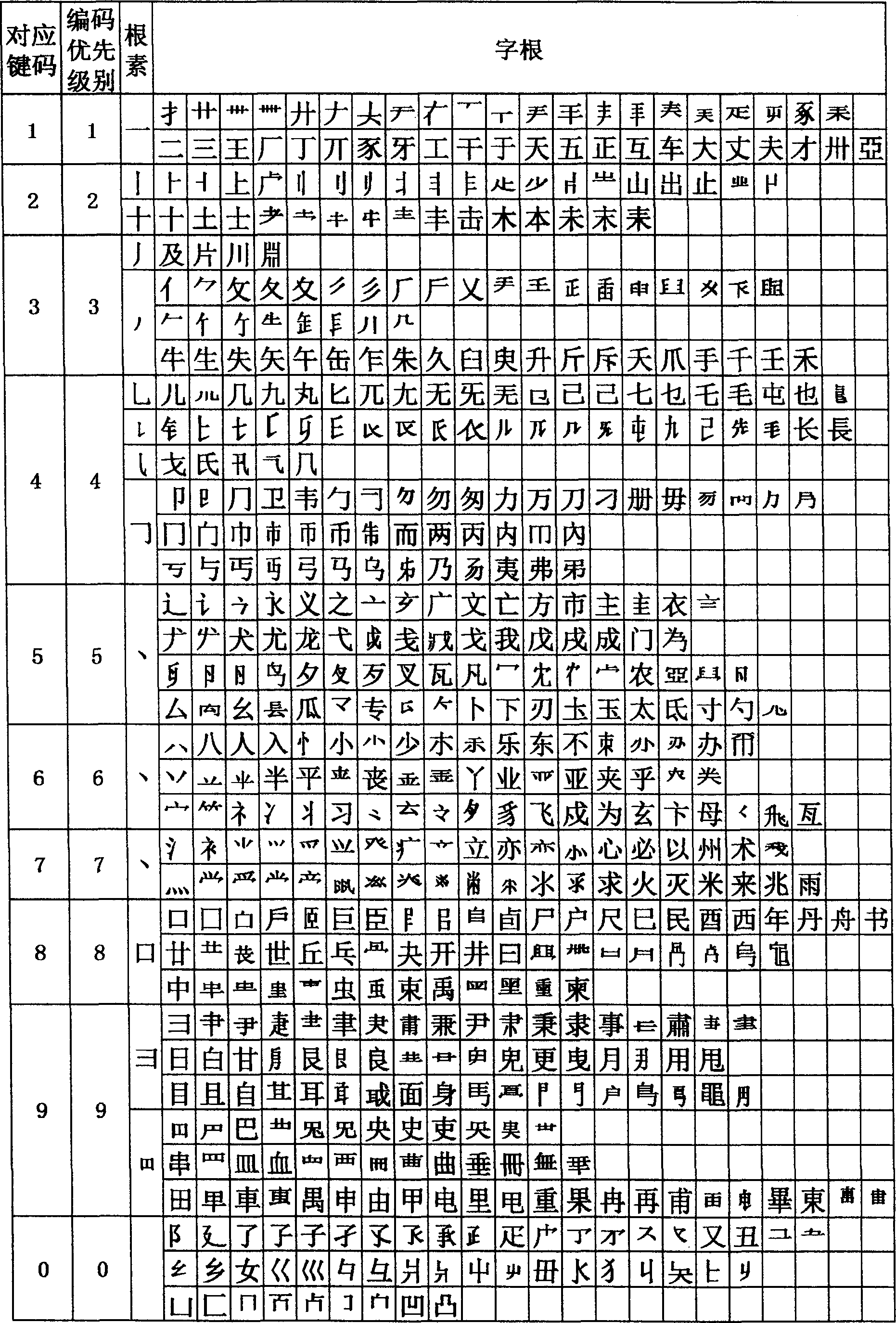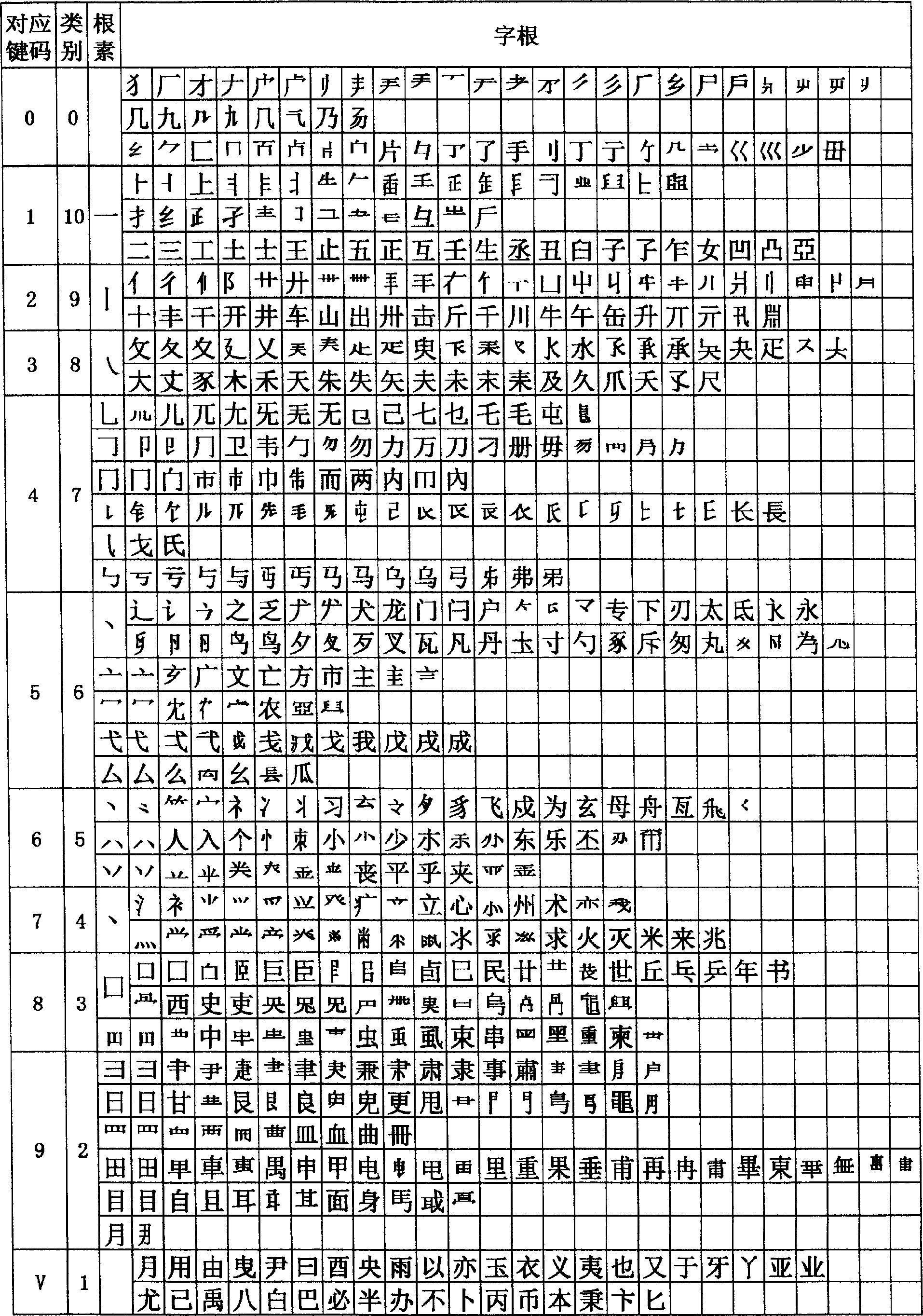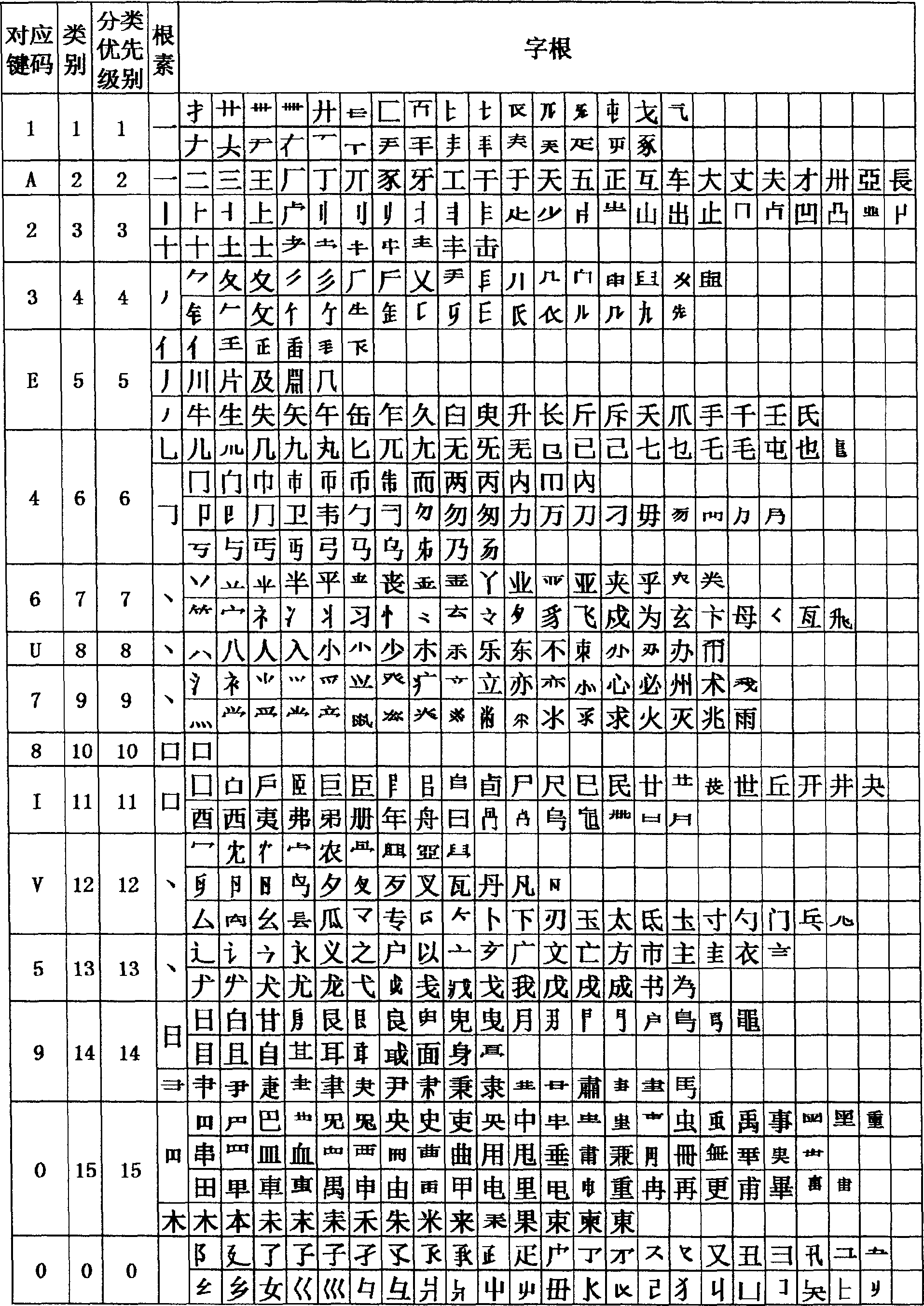'Gensu' code Chinese character input method
A Chinese character input and Chinese character technology, applied in the field of computer Chinese character input, can solve problems such as unfavorable correspondence of key codes, no breakthrough limitations, splitting of Chinese characters and difficulty in grasping the classification of radicals, etc.
- Summary
- Abstract
- Description
- Claims
- Application Information
AI Technical Summary
Problems solved by technology
Method used
Image
Examples
Embodiment 1
[0053] A. Split Chinese characters into radicals. The rules for splitting Chinese characters are as follows:
[0054] (1), a single stroke is not coded as a radical, except for a single point "", the rest are ignored when coding, that is, each radical is composed of at least two strokes, such as "Lu, Wei, and" "One" in such words is ignored and not encoded. The single stroke refers to a stroke that is not connected with other strokes and all strokes close to it are connected or intersected. For example, the first stroke of the word "bean" is a single stroke, and the last stroke is due to the stroke "丷" near it. are not connected, so it is not a single stroke, but is related to "丷" to form "" as a root. Although "彳, 纟, 饣" are radicals, but because a single stroke is ignored, their codes are the same as "亻, 饣" respectively. The coding of ". The Chinese character that one stroke forms is coded according to radical code rule, as " one, two ".
[0055] (2), Chinese character...
Embodiment 2
[0107] A. Split Chinese characters into radicals. The rules for splitting Chinese characters are as follows:
[0108] (1), a single stroke is not coded as a radical, except for a single ", ", the rest are ignored during coding or form a radical with the strokes near it, that is, each radical consists of at least two strokes constitute. The Chinese character that one stroke forms is coded by radical code rule, as " one, second ".
[0109] (2), the Chinese characters of related structure, intersection structure, fusion structure, stroke connection structure, stroke combination or radical are not split as radicals. Chinese characters with connected structure and separated structure, combination of strokes or splitting of radicals.
[0110] (3) Since "亠" is mostly not connected with other strokes, the following splitting regulations can be made separately for the combination of characters and strokes containing the root element of "丝": (a) When "亠" is separated from other stroke...
Embodiment 3
[0149] A, the Chinese character is split into radicals, and the Chinese character splitting rule is the same as embodiment one.
[0150] B. Extract the root element and classify the radical according to the information of the root element, and the radical corresponds to its category and key code:
[0151] (1) Root element extraction: extract the following root elements for classification of radicals, "一", "丨", "十", "ノ", "丿", "亻", "乚", "丨", "口", "日", "Wood". Among them, "丿" is composed of "丨" and Therefore, it can be considered that the radicals such as "month, household, and corpse" contain the root elements of "day" or "mouth" respectively.
[0152] (2) Radicals are classified according to their belonging information, quantity information, and stroke order position information:
[0153] 1), the non-character radicals whose starting strokes are only composed of "one" root element are classified into category 1, and the starting strokes are only classified into 2 categ...
PUM
 Login to View More
Login to View More Abstract
Description
Claims
Application Information
 Login to View More
Login to View More - R&D
- Intellectual Property
- Life Sciences
- Materials
- Tech Scout
- Unparalleled Data Quality
- Higher Quality Content
- 60% Fewer Hallucinations
Browse by: Latest US Patents, China's latest patents, Technical Efficacy Thesaurus, Application Domain, Technology Topic, Popular Technical Reports.
© 2025 PatSnap. All rights reserved.Legal|Privacy policy|Modern Slavery Act Transparency Statement|Sitemap|About US| Contact US: help@patsnap.com



